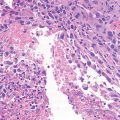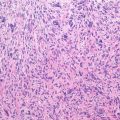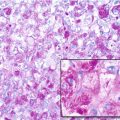Piero Picci, Marco Manfrini, Nicola Fabbri, Marco Gambarotti and Daniel Vanel (eds.)Atlas of Musculoskeletal Tumors and Tumorlike Lesions2014The Rizzoli Case Archive10.1007/978-3-319-01748-8_49
© Springer International Publishing Switzerland 2014
49. Chemotherapy in Ewing Sarcoma
(1)
Chemotherapy Ward of Musculoskeletal Tumors, Istituto Ortopedico Rizzoli, Bologna, Italy
Abstract
Neoadjuvant chemotherapy with the aim of reducing tumor mass, increasing the likelihood of local control, and facilitating conservative surgical approaches is standard (ESMO and European Sarcoma Network Working Group 2012).
Neoadjuvant chemotherapy with the aim of reducing tumor mass, increasing the likelihood of local control, and facilitating conservative surgical approaches is standard (ESMO and European Sarcoma Network Working Group 2012).
The combination of the six drugs, vincristine, dactinomycin, Adriamycin, cyclophosphamide, ifosfamide, and etoposide, is the standard treatment for first-line chemotherapy of Ewing sarcoma (ES) (Grier et al. 2003).
In surgically treated patients, pathological evaluation of chemotherapy identifies patients with different probability of survival, higher in those patients with a good pathological response (Cotterill et al. 2000; Bacci et al. 2000).
Different strategies of dose intensification have been evaluated (Granowetter et al. 2009; Womer et al. 2012; Ferrari et al. 2011). The results of Protocol AEWS0031 suggest that a dose intensification obtained by an interval compression (every 2 weeks) of the chemotherapy courses may be more effective compared to a standard approach based on chemotherapy courses given every 3 weeks. This strategy seems to be beneficial in pediatric patients, but not in adults (Womer et al. 2012).
A dose intensification based on high-dose chemotherapy and peripheral blood stem cell rescue was used in poor responder patients to a six-drug primary chemotherapy in a joint study between Italian Sarcoma Group and Scandinavian Sarcoma Group. The results showed that poor responder patients had the same probability of event-free survival obtained in good responder patients (Ferrari et al. 2011).
To investigate the role of high-dose chemotherapy in ES, in 1999, a randomized clinical trial (EUROEWING) was activated, but unfortunately the results of the group of patients randomized for the high-dose chemotherapy are not yet available.
The strategy of treatment for patients with synchronous metastases is based on chemotherapy combined with local and metastatic control by the use of aggressive surgical and/or radiotherapeutic approach.
The probability of survival of patients with metastatic disease is lower than 30 % even when intensive but standard chemotherapy regimens are used (Cangir et al. 1990; Kolb et al. 2003).
Use of high-dose therapy and autologous stem cell rescue has been adopted, and in a recent joint study of the Italian Sarcoma Group and Scandinavian Sarcoma Group, a survival higher than 50 % has been reported in patients with lung metastases and/or 1 bone metastasis (Luksch et al. 2012). In patients with very high risk, such as those with multivisceral involvement, multiple skeletal lesions, and/or bone marrow infiltration, the probability of survival reached 30 % when high-dose chemotherapy was delivered in addition to aggressive surgery and/or radiotherapy for all the sites of disease (Ladenstein et al. 2010).
In case of patients with only pulmonary recurrent disease, the relapse-free interval is the main prognostic factor (Bacci et al. 2006). Standard treatment of patients with isolated lung metastases is polychemotherapy, to be selected considering the previous chemotherapy treatment (ESMO and European Sarcoma Network Working Group 2012). High-dose treatments with autologous stem cell rescue are still investigational, but frequently adopted in several centers. In case of isolated lung metastases with a long (> 36 months) relapse-free survival, chemotherapy can be omitted, and surgical resection with radiation therapy of the lungs is recommended (Briccoli et al. 2004).
Stay updated, free articles. Join our Telegram channel

Full access? Get Clinical Tree






